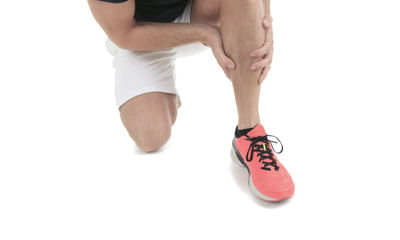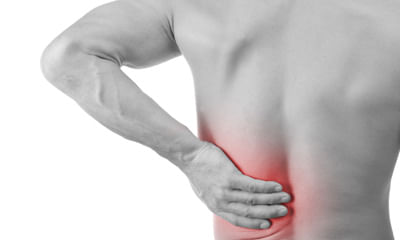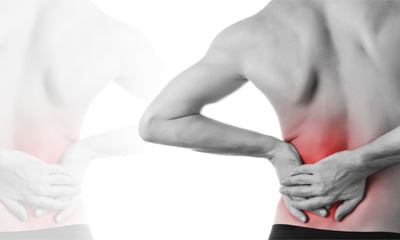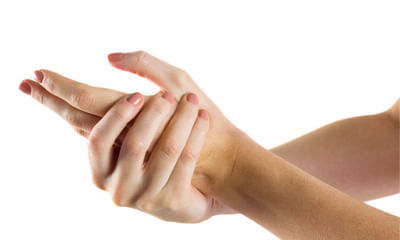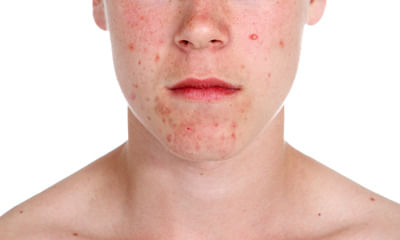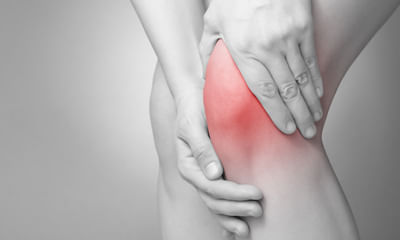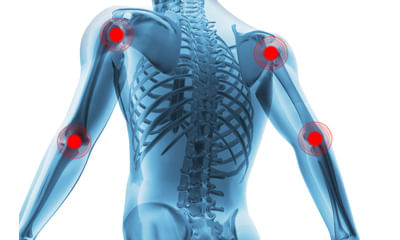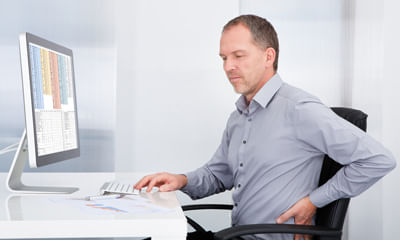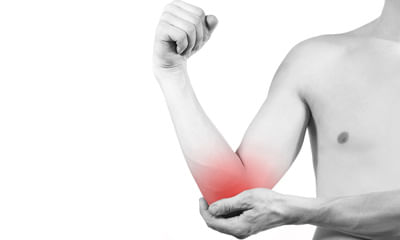Tablets For Bone Pain
I am a 23 years male and I go to gym regularly. Around 2 weeks back my right wrist started hurting and now if I close my ...
Ask Free Question
Hello, even after proper physio treatment and rest, if the pain is same and feeling uncomfortable then you should go for the surgery.
Mine son is 6 year suddenly he feel lot of pain in right leg he is not able to lift it up and even not move he feel lots ...
Ask Free Question
Hi lybrate user ,this might be due to growing pain , Many children have pains in their legs without any obvious cause and these are often called growing pains. Even though the child can be in a lot of pain, no damage is happening to the child's bones or muscles, and growing pains can respond to simple treatments like physiotherapy . regards
There is a female of around 40 years she has heel pain (pricking pain) since two months what is the best treatment to gi ...
Ask Free Question
Minutes at a time. This is especially beneficial at the end of a long day or when you’ve spent a lot of time on your feet. Or, roll a frozen water bottle under your foot. This method incorporates a bit of massage, relieving tightness in the bottom of your foot. Massage. Massaging the arch of your foot helps to relieve pain and promote mobility. Use your fingers and knuckles to deeply massage your foot for 1 to 5 minutes at a time. One technique is to place both thumbs at the center line of your arch and move them to the outer edges of your feet. Inserts. Use cushion inserts in your shoes for additional support and cushioning. Inexpensive options can be purchased off the shelf. Wear supportive shoes with thicker soles and extra cushioning for additional support that can help to reduce tension in the plantar fascia. Kinesiology tape can be used to improve arch and heel support. Night splints. Many people find quick and effective results by using night splints. They can be worn while sleeping to stretch the plantar fascia. They help to keep the plantar fascia relaxed and prevent you from pointing your feet down. Exercise foot flex use your hand to pull your toes back toward your shin. Hold this position for about 30 seconds .do each side two to three times. Toe towel grab place a small towel under your foot. Curl your toes to grip the towel. Raise the front of your foot off the floor. Hold this position for a few seconds. Release the towel as you lift up your toes and spread them as far apart as possible. Heel and calf stretch to do this stretch: 1.stand facing a wall. 2.place your hands on the wall and move one foot back as far as you can comfortably. Toes on both feet should be facing forward, heels flat, with a slight bend in your knees. 3.lean into the stretch and hold for 30 seconds. You should feel the stretch in your back leg. 4.change legs and repeat. 5.do this stretch twice for both legs. Golf ball roll roll a golf baell under your right foot. Continue for up to 1 minute. Do each foot two to three times.
I have plantar fasciitis in one leg, now developing the same symptoms with the other leg, but I have not taken treatment ...
Ask Free Question
Hi Lybrate user, planter fascitis is the inflammation of a thick band of tissue that connects the heel bone to the toes. The inflamed tissue runs across the bottom of the foot. Symptoms include stabbing pain near the heel. Pain might be worse in the morning and with prolonged standing, running or jumping. Treatments include physiotherapy, stretching exercises, you can visit neay by physiotherapy clinics for drug free management. Regards.
Hi. 22 m hereim noticing small bumps on my tongue. Its been around 2 months now since I first noticed. There are 4-5 tin ...
Ask Free Question
Tiny bumps on the base of the tongue are taste buds or papillae. Generally, the most effective treatment for black tongue is the daily use of a tongue scraper, which removes the dead keratinized cells from the top of the tongue. Stopping or reducing any habits that might cause irritation (smoking, regular consumption of soft drinks) to the top of the tongue also usually helps reduce the problem. Of course it is important to realize that this is a harmless condition, and if it doesn’t cause too many symptoms, it really doesn’t require treatment. Black hairy tongue should be managed only with proper oral hygiene instructions.
My father was in a motorbike accident 2 days ago. He is 69. We are from america visiting auroville. He cracked a rib and ...
Ask Free Question
We cannot prescribe medicine as we are physiotherapists. We can also suggest you home care advise like keeping ice in the injured area on the cracked rib and bone. You need to consult the physician for the medicines. For the toileting you can use commodes which will help you to have more comfort while sitting and going for toilet.
I am 42 years old .now days I am getting some knee pain when I am sitting down or standing up, some time it pain and som ...
Ask Free Question
We do not prescribe medicines as we are physiotherapists if you want we can give you suggestions to address your knee pain. Knee pain this is a general knee pain and for this you can follow these measures: one keep a pillow right under the knee while sleeping, next is you can keep ice in the painful area for about 5--10 minutes, it looks like you are is important to check that. Anaemia always leads to the symptoms of being tired and also having body pain though there may not be any pathological reasons for knee pain. With knee exercises you will definitely feel better and muscles must be strengthened .•don't play through pain. As soon as you notice exercise-related knee pain, ice the area and rest. Until your knee is pain-free, avoid activities that put stress on your patellar tendon. •strengthen your muscles. Strong thigh muscles are better able to handle the stresses that can cause patellar tendinitis. Eccentric exercises, which involve lowering your leg very slowly after extending your knee, are particularly helpful. •improve your technique. To be sure you're using your body correctly, consider taking lessons or getting professional instructions when starting a new sport or using exercise equipment. •therapy •a variety of physical therapy techniques can help reduce the symptoms associated with patellar tendinitis, includingback pain it looks like you are anaemic. If you have back pain after you sit for long hours then it is due to your haemoglobin levels as it is important to check that. Anaemia always leads to the symptoms of being tired and also having back / leg pain though there may not be any pathological reasons for back pain. It looks like you are anaemic. And also you have to check with your vitamin and calcium, if the bones are weak then automatically the pain gets triggered more as there is less severity of the painbe strengthened 1.resisted terminal knee extension: make a loop with a piece of elastic tubing by tying a knot in both ends. Close the knot in a door at knee height. Step into the loop with your injured leg so the tubing is around the back of your knee. Lift the other foot off the ground and hold onto a chair for balance, if needed. Bend the knee with tubing about 45 degrees. Slowly straighten your leg, keeping your thigh muscle tight as you do this. Repeat 15 times. Do 2 sets of 15. If you need an easier way to do this, stand on both legs for better support while you do the exercise. 2•standing calf stretch: stand facing a wall with your hands on the wall at about eye level. Keep as arthritis is very common that you get generally bilaterally. Ice therapy would definitely help to reduce the inflammation. We also advise you to use knee cap which would help to prevent the knee from damaging further and also to maintain the quadriceps muscle tone •stretching exercises. Regular, steady stretching exercises can reduce muscle spasm and help lengthen the muscle-tendon unit. Don't bounce during your stretch. 3•strengthening exercises. Weak thigh muscles contribute to the strain on your patellar tendon. Exercises that involve lowering your leg very slowly after extending it can be particularly helpful, as can exercises that strengthen all of the leg muscles in combination, such as a leg press.•this is a general knee pain and for this you can follow these measures: one keep a pillow right under the knee while sleeping, next is you can keep ice in the painful area for about 5--10 minutes, it looks like you are is important to check that. Anaemia always leads to the symptoms of being tired and also having body pain though there may not be any pathological reasons for knee pain. With knee exercises you will definitely feel better and muscles must be strengthened.
I am a 23 years male and I go to gym regularly. Around 2 weeks back my right wrist started hurting and now if I close my ...
Ask Free Question
Hi Mr. lybrate-user. I hope you are fine. I went through the report that you have mentioned above and going through the history you have provided. I would say synovial thicvkening in sports athletes are very common especially in wrist which caused due to "over strenious work "this type of injury are very common in body builders, tennis players or any spoirts which involves maximum use of wrist. Synovial thickening is our body's response to friction caused due to inability to cope up with stress those tendons or ligaments going through. So coming to treatment part:- sports modification like using wrist support while workout, correct the position of your grip, reduce the amount of reps and repitation for 2-3 weeks to reduce load on your tendons ,give couple of days rest to it. Medications local diclo spray ,icepack is sufficient and for medications follow only on written prescription. I hope this will help. All the best.
I have been suffering from disc herniation for the last 5 weeks. Pain is less than before. Rarely pain is observed in le ...
Ask Free Question
Poor sitting posture is a common cause of sciatica. To assist the support of your lower back many simple and effective products have been developed over time. These include: lumbar d-roll bassett frame kinesiology lumbar tape please ask your physiotherapist for their advice in what will help you most. This simple stretch helps relieve sciatica pain by loosening your gluteal and piriformis muscles, which can become inflamed and press against the sciatic nerve. 1.Lie on your back with your legs extended and your feet flexed upward. 2.Bend your right leg and clasp your hands around the knee. 3.Gently pull your right leg ac 4.Ross your body toward your left shoulder. Hold it there for 30 seconds. Remember to pull your knee only as far as it will comfortably go. You should feel a relieving stretch in your muscle, not pain. 5.Push your knee so your leg returns to its starting position. 6.Repeat for a total of 3 reps, and then switch legs. 5.sitting spinal stretch sciatica pain is triggered when vertebrae in the spine compress. This stretch helps create space in the spine to relieve pressure on the sciatic nerve. 1.Sit on the ground with your legs extended straight out with your feet flexed upward. 2.Bend your right knee and place your foot flat on the floor on the outside of your opposite knee. 3.Place your left elbow on the outside of your right knee to help you gently turn your body toward the right. 4.Hold for 30 seconds and repeat three times, then switch sides. 6. Standing hamstring stretch this stretch can help ease pain and tightness in the hamstring caused by sciatica. 1.Place your right foot on an elevated surface at or below your hip level. This could be a chair, ottoman, or step on a staircase. Flex your foot so your toes and leg are straight. If your knee tends to hyperextend, keep a slight bend in it. 2.Bend your body forward slightly toward your foot. The further you go, the deeper the stretch. Do not push so far that you feel pain. 3.Release the hip of your raised leg downward as opposed to lifting it up. If you need help easing your hip down, loop a yoga strap or long exercise band over your right thigh and under your left foot. 4.Hold for at least 30 seconds, and then repeat on the other sideif you have low back pain and sciatica you can undergo intermittent pelvic traction where in your half of your body weight will be added in the electronic traction so that that would help you to reduce the pain, along with interferential therapy stimulations which would help you to get relieved from the radiating pain. Apply ice for the pain to get subsided immediately. If you cannot go immediately for the physiotherapy treatment. Ice can be kept in the low back where you have back pain. It is suggestible to wear lumbo sacral belt which would help you to build the abdominal muscle tone which itself would make you feel better. You can also wear mcr chappals which would help you to have less weight falling in the painful back. U have to take vitamin d rich foods. Likemilk,cheese, yogurt,brocoli, spinach.u need calcium consumption for increase the bone density. Lackof bone and bones crush inside the body this might be due to low calcium or vitamin d which has more impact on the bone density and also it makes one to feel that there is lack of bone strength or in a way the bones are brittle and almost breaking and they feel it is crushed in a way there are many bones breaking at the same time. You have to take vitamin d rich foods. Likemilk,cheese, yogurt, brocoli, spinach.u need calcium consumption for increase the bone density. vitamin d intake via supplements or exposure to low levels of sunlight. Vitamin d is used to absorb calcium in the bone and regulate calcium in the blood. If you have leg pain then you have to rule out the causes for having leg pain. First of all check your weight and your haemoglobin levels, as anaemia always leads to the symptoms of being tired and also having leg pain though there are no issues with the knee joint or back pain. If not if the pain radiates down the back of thigh and legs then it might be due to sciatica. Kindly consult the nearby physiotherapist. Hope you recover soon from the leg pain. Lumbar radiculopathy: pain in lower back or glutei region with sharp shooting pain radiating from hip to leg/foot region, occurs in cases of lumbar radiculopathy or sciatica. This is due to compression of lumbar nerve root or sciatic nerve by disc prolapse, facet joint, trauma, hypertrophied ligamentumflavum, piriformis syndrome, etc. L5 vertrbrae and patient has pain the legs and sensation is disturbed? That is called as lumbar vertebrae. And there are 5 lumbar vertebrae and the 5th lumbar vertebrae is always is located in the lower end where the body weight is taken and it is generally fused with sacral vertebrae. That is where the sciatic nerve passes by and the nerve gets compressed that's the reason you have pain and sensation is disturbed. Loss of concavity of l4-l5 vertebrae. It is other wise called as the lumbo sacral curve which is very important for the spine to take the entire weight evenly if not it leads to disturbance of the disc and also the vertebrae which makes the spine to loose its concavity that's why it is called as loss of posterior concavity. For which we need to improve the spine posture and we need to adapt good posture during our day to day life activities. I have pain in my left side leg. This should be due to the sciatic nerve compression in the right side probably close to your l5 vertebrae. It can also be due to the strain on the left leg, try wearing mcr chappals which would help you to get relieved from pain. We suggest you to wear a lumbo sacral corset and also modified foot wear if you want we can send you by courier.
Long term shoulder/ shoulder blade pain, shoulder moved forward winter it gets worstlong term facial paining term pain i ...
Ask Free Question
The symptoms you've listed can be complex and may indicate various underlying health conditions. Given the wide range of symptoms affecting different parts of your body, it would be best to consult with a primary care physician initially. They can conduct a thorough assessment, review your medical history, and perform any necessary physical examinations. Based on your symptoms, the primary care physician may refer you to one or more specialists, depending on their assessment. Here are some specialists who may be involved in your care: neurologist: given your long-term headache, memory issues, and double vision, a neurologist specializes in evaluating and treating conditions affecting the nervous system, including the brain and nerves. Rheumatologist: if you're experiencing long-term body pain, weakness, and difficulty sleeping, a rheumatologist specializes in diagnosing and treating conditions affecting the joints, muscles, and bones, such as fibromyalgia or autoimmune disorders. Ophthalmologist: since you're experiencing long-term effects on your eyes, including double vision and changes in prescription, an ophthalmologist specializes in diagnosing and treating eye conditions and may perform a comprehensive eye examination. Orthopedic surgeon: if your shoulder and shoulder blade pain is persistent and affecting your mobility, an orthopedic surgeon specializes in diagnosing and treating musculoskeletal conditions, including injuries and disorders of the shoulder. Ent specialist (otolaryngologist): if you're experiencing long-term facial pain, pain around the ear, and difficulty sleeping due to these symptoms, an ent specialist can evaluate conditions affecting the ear, nose, and throat, such as temporomandibular joint (tmj) disorder or sinusitis. In terms of blood tests, your healthcare provider may recommend various tests based on your symptoms and suspected underlying conditions. These may include: complete blood count (cbc) comprehensive metabolic panel (cmp) thyroid function tests inflammatory markers (e.g. Erythrocyte sedimentation rate, c-reactive protein) vitamin d levels autoimmune markers (e.g. Antinuclear antibodies) lyme disease testing (if relevant based on your history and symptoms)

